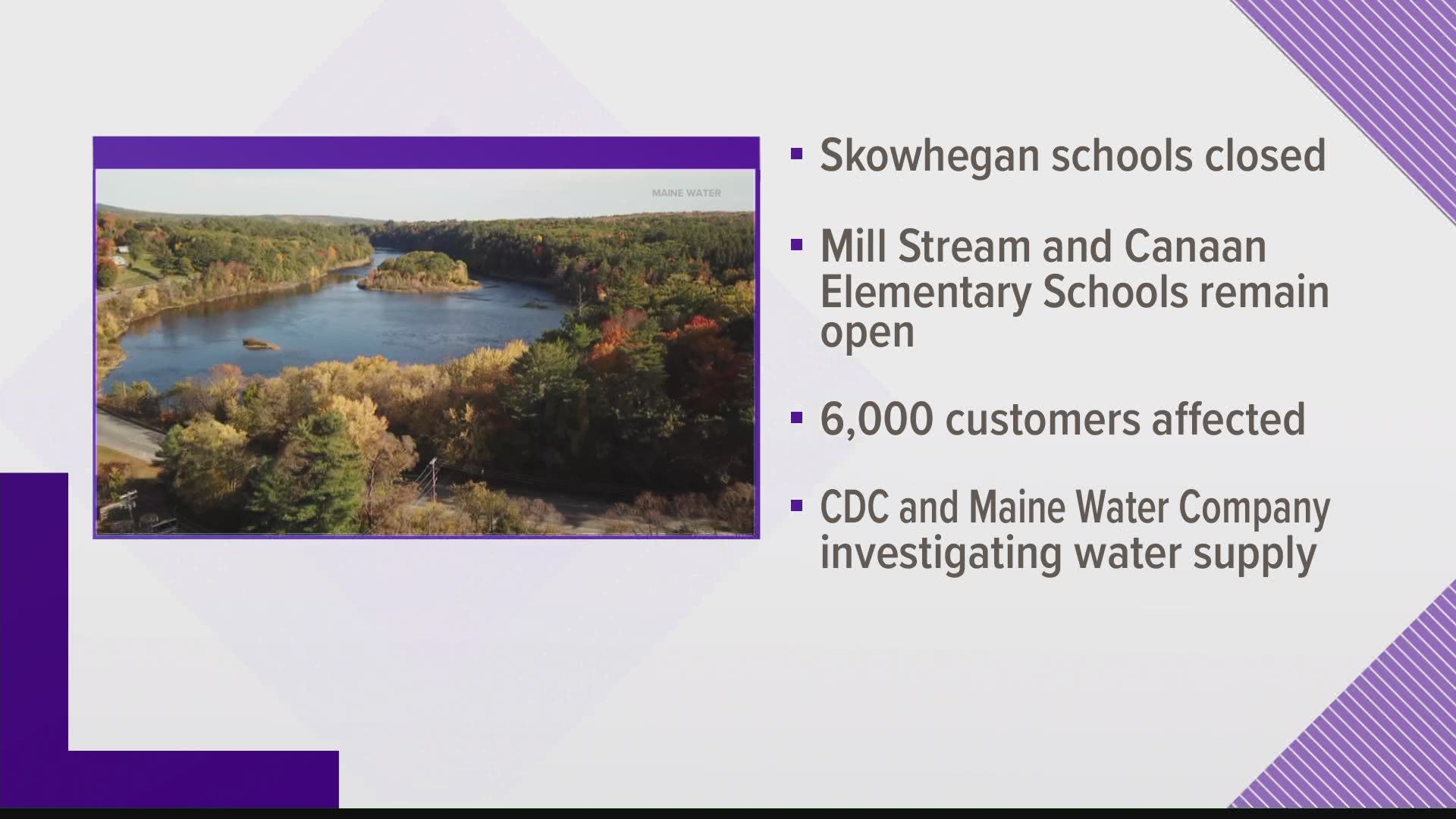SKOWHEGAN, Maine — The Skowhegan "Do Not Drink" order issued by the Maine CDC last Thursday was lifted Tuesday afternoon, the Maine Water Company announced.
Maine Water said after reviewing test results from a state-certified laboratory of samples from Maine Water's Skowhegan system, the Maine CDC confirmed that the water meets all state and federal drinking water standards. Customers may now resume use of water for all purposes, including drinking and food preparation, Maine Water said.
The Do Not Drink order affected approximately 6,000 customers, who were notified of the order by the company.
Do Not Drink orders are issued when there is concern about contamination in a water supply from biological, chemical, or radiological contaminants that could make the water unsafe for consumption. Under a Do Not Drink order, customers should not use the water for drinking, making ice cubes, food preparation, brushing teeth, or any other activity involving the consumption of water.
Affected consumers were asked to use bottled water instead for these purposes. The State worked with Skowhegan to provide bottled water as needed. Bottled water was also provided to critical customers such as nursing homes, the county jail, medical facilities, and Skowhegan schools to ensure that they could remain open.
President of Maine Water Rick Knowlton said the company’s first priority was confirming the quality of the water for consumers to drink. Only when water quality test results confirmed that there were no regulated contaminants detected and that the water meets all state and federal water quality standards was the Do Not Drink order lifted.
The company continues to provide water to customers from the alternate supply in the Kennebec River and has fully flushed the system after the odor was originally detected. It is recommended that customers run the cold water through the largest tap in the house, typically the bathtub, for a few minutes to flush any stagnant water that may be in their own home’s internal plumbing.
“We know this event has been a big inconvenience for our customers,” Knowlton said in a release Tuesday. “We thank our customers, employees, municipal and state officials, the media, and our partners in the business community for their support and patience as we conducted our investigation, made operational changes and confirmed the water quality in the system through independent lab analysis. The rapid response and collaboration by all parties was truly impressive and greatly appreciated.”
On Thursday afternoon, the Maine Water Company’s Skowhegan Division notified Maine CDC’s Drinking Water Program that it had received a report from a customer of an unusual taste and odor in drinking water from the customer’s faucet. Upon confirming the customer’s report at a nearby hydrant and observing a sheen on the surface of the two small ponds that supply water to the treatment plant, Maine CDC issued a Do Not Drink Order for all customers of the water system.
Maine Water Company is continuing to work with the Maine CDC’s Drinking Water Program and the Maine Department of Environmental Protection to investigate the cause of the sheen on the surface of the supply ponds. Maine Water Company uses the two ponds and an intake drawing water from the Kennebec River to supply its water system. Currently, the ponds are disconnected from the system and only the river is being used to bring water into the treatment plant.
The company continues to investigate the cause of the soapy smell that was first noticed on Thursday, which they say appears to be related to construction work done on a dam between Upper and Lower ponds, the primary water source for Skowhegan. On Friday, the company switched the water source to the Kennebec River, and will continue use that source to serve the system until the investigation concludes.
“We recently installed a new flow control structure between the two ponds,” Knowlton said. “Last Monday, the 9th of November, we were working to reduce leakage around the new structure. Our very strong suspicion today is that project work is connected to the odor, but we need confirmation through further laboratory analysis, which is underway. The good news is that on a project like that, we only use materials with NSF 61 certification*, which means they are safe for use in drinking water applications. Maine Water will answer the question of “what happened” and we will share our findings with our customers, the Skowhegan community, and Maine’s Drinking Water Program.”

